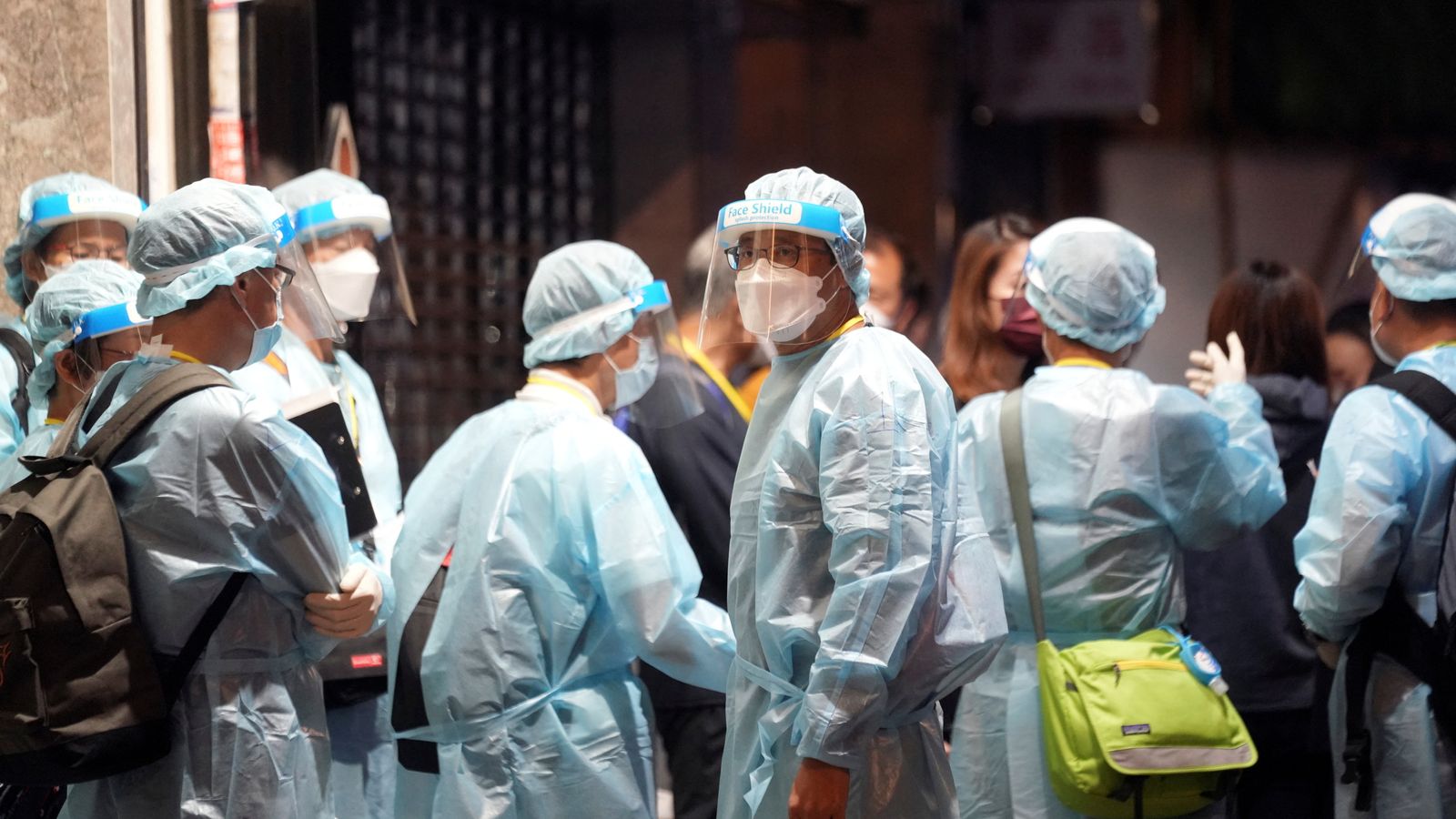Throughout the length of the pandemic, the case rate in Hong Kong has been so low compared to the UK that it has been impossible to compare the two countries on the same chart.
As the UK rode out winter waves and faced onslaughts from more infectious variants, Hong Kong had not had more than two daily cases per 100,000 people. But that changed on 5 February this year.
Within a week of that date, cases had risen six-fold. After two weeks, there were about 25 times more cases.
By 5 March, there were almost 300 times more daily COVID cases than there were a month before.
And while it has been flattening out in the UK, the Hong Kong death rate has followed the same trend as its cases.
At the beginning of this month, about one in every twenty people recorded to have COVID was dying from the disease two weeks later.
Again, this is a far higher rate than we’ve seen in the UK.
On the face of it, Hong Kong has a fairly similar vaccination rate to the UK.
Just over seven in ten people have received two vaccine doses in both countries, although the UK’s booster rate is twice as high as in Hong Kong.
But when you delve into the detail, it begins to become clearer why so many of Hong Kong cases are resulting in deaths.
Hong Kong, like China, didn’t prioritise immunisation of the elderly and vulnerable.
So while their headline rate of vaccination might be similar to the UK’s, and the proportion of younger people fully vaccinated is higher than in Britain, the share of older people who are protected from the disease is far lower.
Professor Paul Hunter, a Professor in Medicine at the University of East Anglia, said that non-pharmaceutical interventions – like border control and lockdowns, which have prevented high case rates in Hong Kong so far – “are almost always ultimately doomed to failure, unless the disease dies out beforehand.”
“All countries like Hong Kong and New Zealand, however well they kept COVID out, ultimately will see a surge.”
“Sometimes non-pharmaceutical interventions that delay the inevitable can be enough, as it gives you time to improve treatments, produce vaccines and ultimately reduce mortality.”
“Why we are seeing less severe disease with current infections [in the UK] is largely down to immunity from both vaccines and prior infection.
“Turning to Hong Kong, we have a community with high vaccine coverage up to two doses but relatively low booster uptake and very little prior infection.”
“New Zealand is still seeing a huge surge in cases as their zero-COVID policy ends, but far far fewer deaths. Largely because they vaccinated and boosted the more vulnerable as a priority.”
Dr Peter English, a retired consultant in communicable disease control, says it’s unlikely that the UK will experience a similarly high death rate at any time in the near future.
“We have a much higher vaccine uptake in the oldest and most vulnerable people – the group most likely to have serious disease.”
The Data and Forensics team is a multi-skilled unit dedicated to providing transparent journalism from Sky News. We gather, analyse and visualise data to tell data-driven stories. We combine traditional reporting skills with advanced analysis of satellite images, social media and other open source information. Through multimedia storytelling we aim to better explain the world while also showing how our journalism is done.







